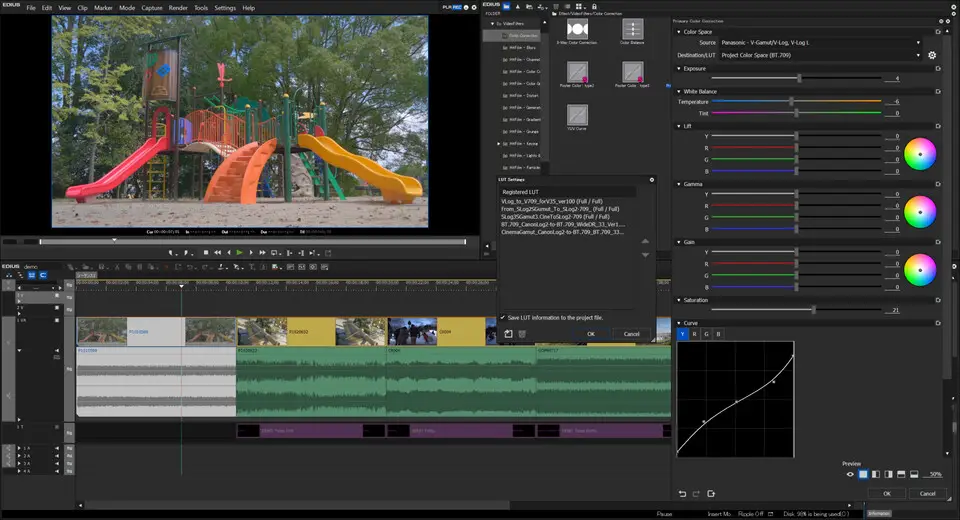

This opens the Exporter dialog, which shows you not just export presets, but all the different encoding engines you can use, representing all the formats EDIUS can export to as well as bring in. Let’s say I’m ready to encode my video, so I right-click in the timeline and choose Print to File. To conclude this tutorial, I’d like to leave you with a list of all of the formats supported by EDIUS form simultaneous, same-timeline editing. For same-day edits, where your required turnaround time leaves no latitude for time-consuming transcodes, it’s imperative to be able to work with footage in this way. Instead of wasting a ton of time trying to transcode hours of footage to where it’s usable for you, with EDIUS you can bring it in, put it in the timeline immediately, regardless of the flavor of the footage, and start editing. If you’re an event videographer, whether you’re capturing a huge live event or a wedding, you may have different people shooting for you who have different brands of camera that capture in different formats to different types of media.
#Capture video in edius pro 8 tv
In the broadcast realm, when I’ve trained editors at TV stations, it’s a huge deal-when someone runs in with some kind of capture or recording device, such as a phone and says, “Here, I’ve got something you want,” they can import the footage, hand the phone back to the person, and now they’ve got the footage that they need, in EDIUS and ready to edit. All these different codecs are playing together with transitions in between. Now, if you watch the tutorial video at the beginning (or end) of this article at around the 6:45 mark, you can see HQX playing and smoothly transitioning to AVCHD in its native format, then smoothly dissolving into XDCAM EX, then smoothly dissolving into my P2 footage, all playing on the timeline in real time without any transcoding whatsoever. Again, I’ll bring it down to the timeline, do a quick trim, and add a transition.

But this time, if I go to my Bin window, the clip is right there as I’d expect it to be, but this time there’s no file transfer process happening because the footage was already in my system. I can click on a clip it to play it in its native format in the Viewer window, or right-click and select Add and Transfer to Bin to add it to the Bin. My P2 footage from my selected folder now populates the P2 folder in the Source Browser. There is no unwrapping and rewrapping, and no transcoding going on here.įigure 7. This is my P2 footage in its native format. With that folder selected, I click OK, and EDIUS returns me to the Source Browser with all the footage in that folder visible in the window ( Figure 7, below). Choosing a folder in the Browse For Folder dialog. If I choose AVC-I 50, as shown in Figure 6 (below), I can see the Contents folder and everything in it.įigure 6. I can then go to my computer, click on a local disk, click my Media folder, choose Edius Media, and choose a folder. If the footage doesn’t populate automatically (showing what’s available on currently connected external media), I can see what I have available for a given format on my computer in the Source Browser by right-clicking, say, P2, and choosing Show Footage.


 0 kommentar(er)
0 kommentar(er)
